Candles are a staple of ambiance, relaxation, and sometimes, a much-needed light source during a power outage. While many people enjoy the warm glow of a candle, few take the time to consider what goes into creating it—specifically, the type of wax used. Two of the most popular candle waxes are soy wax and paraffin wax. Though both serve the same primary purpose of fueling the flame, their differences in composition, environmental impact, burn characteristics, and health effects make them worlds apart. In this article, we will explore these differences in-depth and help you determine which option is better suited to your preferences and needs.

1. Origins and Composition
Soy Wax
Soy wax is a vegetable-based wax derived from soybean oil. The process begins by harvesting soybeans, which are then cleaned, cracked, dehulled, and rolled into flakes. The oil extracted from these flakes is hydrogenated, a process that changes the oil from a liquid to a solid at room temperature. Soy wax is relatively new to the candle market, having first been introduced in the 1990s as an eco-friendly alternative to paraffin.
Because soy wax is a plant-based product, it is often labeled as a more natural and renewable resource. Unlike paraffin wax, soy wax contains no animal byproducts, making it a popular choice among vegans and environmentally-conscious consumers. Its biodegradable nature is another appealing factor for those who are concerned about reducing waste.
Paraffin Wax
Paraffin wax, on the other hand, is a petroleum-based product. It is derived from crude oil through a refining process. When crude oil is processed to make gasoline, lubricating oils, and other petroleum-based products, paraffin wax is a byproduct of this refining. First discovered in the mid-19th century, paraffin quickly became the primary wax used in candle making due to its availability and low cost.
However, because paraffin wax is a byproduct of fossil fuels, it is not considered renewable or biodegradable. It is a non-renewable resource that contributes to the demand for petroleum extraction and processing.
2. Environmental Impact
Soy Wax
One of the major selling points of soy wax is its eco-friendliness. Because it is made from soybeans, a renewable crop, soy wax is seen as a more sustainable option. Soybean farming does require land and resources, but the crop can be replanted yearly, unlike the finite resource of petroleum. Additionally, the production process for soy wax tends to release fewer pollutants into the environment compared to paraffin wax.
Soy wax is also biodegradable, meaning that once it has served its purpose, it will break down over time without leaving harmful residues in the environment. This feature makes soy wax candles a more environmentally responsible choice.
Paraffin Wax
The environmental impact of paraffin wax is more significant than that of soy wax. Being a byproduct of the petroleum industry, paraffin wax contributes to the environmental degradation caused by oil extraction and refining. This process is energy-intensive and releases a variety of pollutants into the air and water, contributing to the ongoing problem of climate change.
Once burned, paraffin wax also releases small amounts of petroleum-based chemicals, which can be harmful to both the environment and human health. Moreover, paraffin wax is not biodegradable, meaning that any unused wax or waste associated with paraffin products will persist in the environment for an extended period.
3. Burn Characteristics
Soy Wax
Soy wax is often praised for its clean-burning qualities. When burned, soy wax produces little to no soot, resulting in a cleaner burn that is less likely to leave black residue on walls, ceilings, or candle jars. This cleaner burn can also mean better air quality in the home, especially for individuals who burn candles frequently.
Another characteristic of soy wax is its slower burn rate. Because it is denser than paraffin wax, soy wax candles tend to burn more slowly, offering a longer-lasting product. This is an appealing feature for consumers who want to get the most out of their candles.
However, soy wax does have a lower melting point than paraffin wax, which can lead to a softer, more easily deformed candle. This lower melting point can also cause soy wax candles to burn unevenly if not properly managed, which may result in “tunneling”—a phenomenon where only the wax around the wick burns, leaving a ring of unused wax around the edges of the container.
Paraffin Wax
Paraffin wax, due to its higher melting point, produces a much firmer candle that is less prone to deformation. It also has a quicker burn rate, which can result in a candle that provides a stronger scent throw—the term used to describe how far and how strong the candle’s fragrance spreads.
Paraffin wax does, however, produce more soot compared to soy wax. This can lead to black marks on surfaces near the candle and poorer air quality in enclosed spaces. The soot from paraffin wax candles can also contain trace amounts of toxic compounds, though these are generally considered minimal.
4. Scent Throw and Fragrance Retention
Soy Wax:
Soy wax is known for its subtle, gentle scent throw. While this is ideal for those who prefer a lighter fragrance, it can be seen as a disadvantage for individuals looking for a stronger and more immediate aroma. The natural properties of soy wax also tend to hold fragrance oils better, leading to a more balanced and long-lasting fragrance experience over time.
Because soy wax burns at a lower temperature, the fragrance oils are released more slowly and gradually, offering a consistent scent throughout the life of the candle.
Paraffin Wax
Paraffin wax, on the other hand, is known for its strong scent throw. Its higher melting point allows the wax to hold and release more fragrance, making it an ideal choice for candles with strong or complex scents. For those looking for a more intense fragrance experience, paraffin wax candles may be the better option.
However, because paraffin wax burns faster, the fragrance oils may also evaporate more quickly, leading to a shorter-lived scent experience compared to soy wax.
5. Health Implications
Soy Wax
Soy wax candles are often touted as a healthier alternative to paraffin candles because they produce little to no soot and are free from harmful chemicals. The lack of toxic compounds in soy wax means that it burns cleaner and is less likely to cause respiratory issues or trigger allergies, especially for individuals with sensitivities to air pollutants.
Additionally, because soy wax is plant-based, it is free from the toxins and carcinogens that may be found in petroleum-based paraffin wax candles. This makes soy wax candles a safer option for indoor use, particularly in households with children or pets.
Paraffin Wax
Paraffin wax has garnered a somewhat negative reputation in recent years due to concerns about the health risks associated with its use. When burned, paraffin wax can release trace amounts of volatile organic compounds (VOCs) such as toluene and benzene, both of which are known carcinogens. Although the amount of these chemicals released is minimal and generally not considered a serious health hazard when used in moderation, some consumers prefer to avoid any potential risks.
The soot produced by paraffin candles can also be an irritant, particularly for those with asthma or other respiratory conditions. While most high-quality paraffin candles undergo refinement to minimize these concerns, the potential health implications still steer many consumers toward soy wax alternatives.
6. Aesthetics and Appearance
Soy Wax
Soy wax has a smooth, creamy appearance that many find visually appealing. Its natural white color provides a clean canvas for dyeing, though it tends to have a slightly muted color when compared to paraffin wax. This makes soy wax an excellent option for more understated or natural-looking candles.
Due to its lower melting point and soft texture, soy wax candles may be more susceptible to surface imperfections such as frosting—a whitish coating that can appear on the surface of the candle. While this does not affect the performance of the candle, some consumers may find it less attractive.
Paraffin Wax
Paraffin wax, with its higher melting point and firmer consistency, offers a glossier and more vibrant appearance. It holds dye well, making it a popular choice for colorful or intricate candles. Paraffin wax is also less likely to develop surface imperfections, maintaining its smooth and polished look throughout its life.
The aesthetic difference between soy and paraffin wax often comes down to personal preference, with some favoring the natural simplicity of soy wax and others drawn to the bold, glossy appearance of paraffin candles.
7. Price and Availability
Soy Wax
Soy wax candles are generally more expensive than paraffin candles due to the higher cost of raw materials and the more labor-intensive production process. The growing demand for eco-friendly and sustainable products has increased the popularity of soy wax candles, but this demand has also driven up the price. However, many consumers are willing to pay a premium for the environmental and health benefits that soy wax offers.
Paraffin Wax
Paraffin wax is widely available and inexpensive, which is why it remains the most commonly used wax in the candle industry. Because it is a byproduct of the petroleum industry, the raw materials are abundant and affordable. This makes paraffin wax candles an appealing option for budget-conscious consumers or for those looking for a more affordable way to enjoy candles.
Conclusion
In the debate between soy wax and paraffin wax, there is no definitive "better" option—it all comes down to your personal preferences and priorities. If you value sustainability, a cleaner burn, and longer-lasting candles, soy wax may be the ideal choice for you. On the other hand, if you prefer stronger scents, a more polished aesthetic, and a more budget-friendly option, paraffin wax might be your go-to.
Both waxes have their unique advantages and disadvantages, but with the information provided, you can make a more informed decision about which type of wax best suits your needs, lifestyle, and values. Ultimately, whether you choose soy or paraffin, you can enjoy the warmth, beauty, and tranquility that candles bring into your home.
Related Blog:
FAQs.
Q: What is the main difference between soy wax and paraffin wax?
The primary difference is the source. Soy wax is derived from natural soybean oil, making it eco-friendly, while paraffin wax comes from petroleum, a non-renewable resource. Soy wax is biodegradable, whereas paraffin wax can release harmful chemicals when burned.
Q: Which wax is more eco-friendly, soy or paraffin?
Soy wax is more eco-friendly because it comes from renewable soybean crops, is biodegradable, and burns cleaner. Paraffin wax, on the other hand, is derived from petroleum, contributing to environmental pollution and leaving behind non-biodegradable waste.
Q: How does the burn time of soy wax compare to paraffin wax?
Soy wax typically burns longer than paraffin wax due to its lower melting point. This means soy candles can last up to 50% longer than paraffin candles of the same size, offering better value and a slower, more even burn.
Q: Do soy wax candles produce less soot than paraffin wax candles?
Yes, soy wax candles produce significantly less soot than paraffin wax candles. Paraffin wax can release black soot that can stain walls and ceilings. Soy wax burns cleaner and produces minimal to no soot, making it a healthier option for indoor use.
Q: Are soy wax candles better for people with allergies or sensitivities?
Soy wax candles are better for people with allergies or sensitivities because they burn cleaner, releasing fewer toxins and irritants. Paraffin wax candles may release harmful chemicals when burned, which can exacerbate respiratory issues and cause allergic reactions.
Q: Can soy wax hold fragrance as well as paraffin wax?
Yes, soy wax can hold fragrance effectively, but paraffin wax is known for retaining and releasing stronger scents due to its structure. However, the cleaner burn of soy wax means fragrances in soy candles are often more natural and subtle.
Q: Are soy wax candles more expensive than paraffin wax candles?
Soy wax candles are often more expensive than paraffin wax candles due to the higher cost of sourcing natural, renewable ingredients. However, the longer burn time and cleaner composition make soy wax candles a worthwhile investment for many consumers.
Q: How does the appearance of soy wax candles differ from paraffin wax candles?
Soy wax candles generally have a softer, more natural appearance with a creamy or frosted finish. Paraffin wax candles are often more glossy and smooth, but they may not burn as cleanly or last as long as soy candles.
Q: Are soy wax candles harder to maintain than paraffin wax candles?
Soy wax candles are easy to maintain, requiring regular trimming of the wick and keeping the wax pool clean. They tend to burn more evenly than paraffin candles, reducing the risk of tunneling and wasted wax, which makes them more user-friendly in the long run.
Q: Why do some people prefer paraffin wax over soy wax?
Some people prefer paraffin wax because of its strong scent throw and lower cost. Paraffin wax can emit more potent fragrances, which is appealing to those who want intense aromas. However, the environmental and health concerns lead many to choose soy wax instead.



















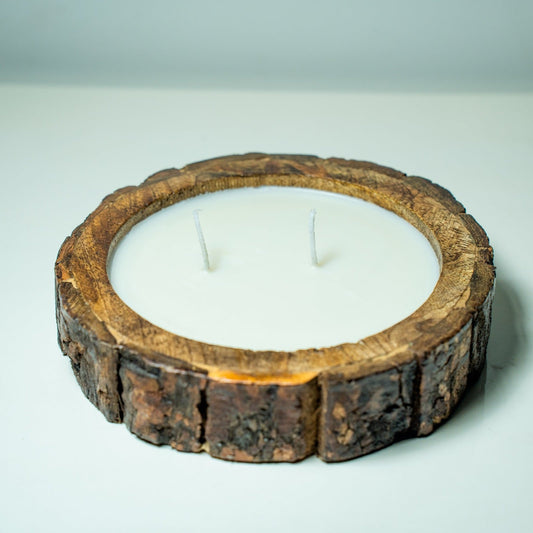
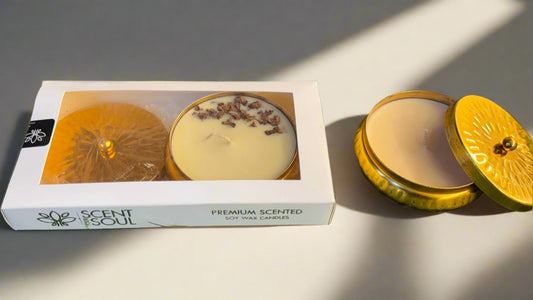


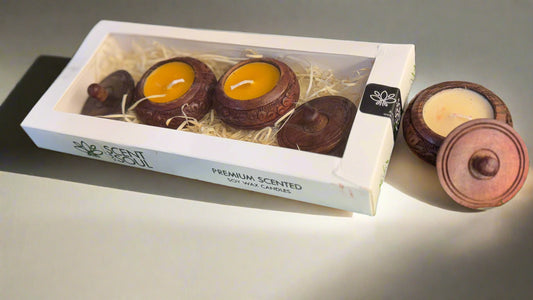

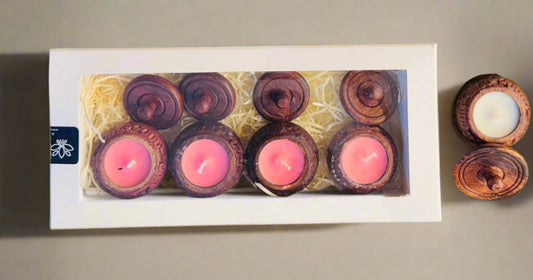

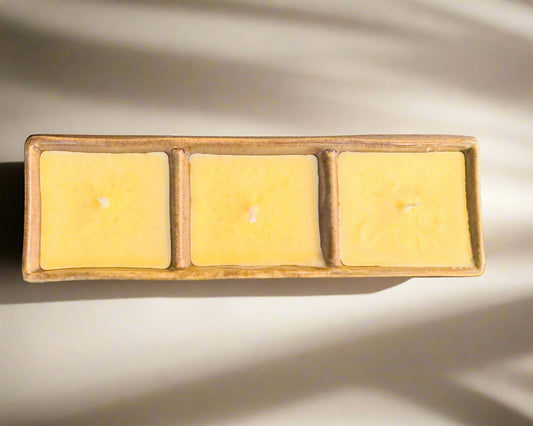








 Whatsapp us!
Whatsapp us!